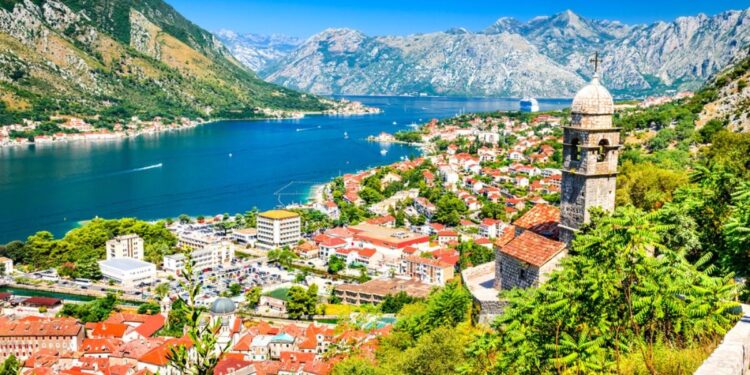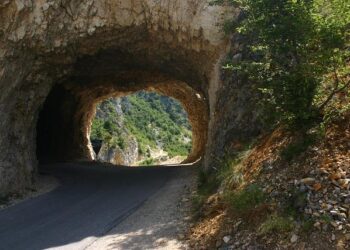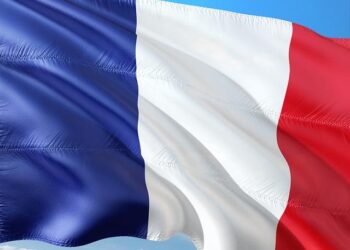As travelers increasingly seek destinations that combine natural beauty with rich cultural experiences, Montenegro has emerged as a top pick on many wanderlust lists. But with its diverse landscapes-from rugged mountains and pristine beaches to historic towns-the question remains: when is the best time to visit Montenegro? According to Lonely Planet, timing your trip can significantly enhance your experience, whether you’re aiming for sun-soaked coastal days, vibrant cultural festivals, or serene mountain hikes. This article explores the ideal seasons to explore Montenegro’s varied attractions, helping travelers plan their visit for maximum enjoyment.
Best Seasons to Experience Montenegro’s Natural Landscapes
Montenegro’s natural beauty transforms with the seasons, each offering a distinct way to engage with the country’s diverse landscapes. Spring, spanning from March to May, bursts with vibrant wildflowers and rejuvenated greenery, making it ideal for hiking through national parks such as Durmitor and Biogradska Gora. The mild weather and fewer tourists during this time allow for peaceful exploration of Montenegro’s lakes and mountains without the crowds.
Autumn, from September to November, paints the landscapes in warm hues of orange and red, perfect for scenic drives along the Adriatic coast or leisurely walks in the Tara River Canyon. The crisp air and stunning fall colors provide a spectacular backdrop for photography and outdoor adventures alike.
| Season | Highlights | Ideal Activities |
|---|---|---|
| Spring (Mar-May) | Blooming flora, mild temperatures | Hiking, birdwatching, peaceful exploration |
| Summer (Jun-Aug) | Warm weather, vibrant coastlines | Beach activities, water sports, festivals |
| Autumn (Sep-Nov) | Colorful foliage, crisp air | Photography, scenic drives, trekking |
| Winter (Dec-Feb) | Snow-capped peaks, tranquil landscapes | Skiing, snowboarding, cozy mountain retreats |
Peak Tourist Periods and How to Avoid the Crowds
Montenegro experiences its busiest influx of tourists during the summer months, particularly from June to August, when the Adriatic coast heats up with beachgoers and festival enthusiasts. Coastal towns such as Budva and Kotor are vibrant but often crowded, with limited availability in accommodations. Travelers can expect bustling streets, packed beaches, and long waits at popular attractions. Additionally, the national parks see a surge in visitors during public holidays and weekends, making these times less ideal for those seeking tranquility.
For a more relaxed experience, consider visiting during the shoulder seasons of May and September. These months offer mild weather, fewer crowds, and more accessible rates. Alternatively, the winter period from December to February presents a unique charm with snow-covered mountain landscapes, ideal for skiing enthusiasts and those looking to escape the tourist rush. To help plan your trip, here’s a quick overview of peak and off-peak periods:
| Period | Tourist Volume | Highlights |
|---|---|---|
| June – August | High | Beach festivals, warm weather, crowded beaches |
| May & September | Moderate | Mild weather, fewer tourists, pleasant sightseeing |
| December – February | Low | Winter sports, serene landscapes, cozy mountain towns |
- Tip: Book accommodations well in advance if traveling during the summer high season.
- Early morning visits to popular sites can help you avoid the daytime crowds.
- Explore inland towns like Žabljak and Pljevlja for peaceful cultural experiences away from coastal hubs.
Local Festivals and Events That Define Montenegro’s Cultural Calendar
Montenegro’s vibrant cultural landscape comes alive through a series of captivating festivals and events that punctuate the year with rhythm, tradition, and celebration. From the sun-soaked Adriatic coast to the rugged mountainous interiors, these gatherings offer travelers a genuine taste of the country’s rich heritage. Notable among these is the Sea Dance Festival, held annually on the beach of Budva, which attracts international artists and music lovers every July, making it a highlight for younger visitors and night owls alike.
Meanwhile, history buffs and folklore enthusiasts shouldn’t miss the Kotor Carnival in February, where the streets burst with colorful costumes, traditional dances, and lively parades that echo centuries-old customs. Throughout the summer, the National Folk Festival in Cetinje showcases authentic Montenegrin music, handcrafts, and cuisine, providing an immersive experience into the country’s past and present. These hallmark events not only define Montenegro’s cultural calendar but also help travelers time their visits to coincide with unforgettable, authentic local experiences.
- Sea Dance Festival – Budva | July | Electronic and pop music festival on the beach
- Kotor Carnival – Kotor | February | Traditional costumes and lively parades
- National Folk Festival – Cetinje | August | Folk music, dance, and local crafts
- Ulcinj Summer Festival – Ulcinj | June | Film screenings, concerts, and poetry slams
| Festival | Location | Month | Highlight | |||||||||||||
|---|---|---|---|---|---|---|---|---|---|---|---|---|---|---|---|---|
| Sea Dance Festival | Budva | July | International music acts on the beach | |||||||||||||
| Kotor Carnival | Kotor | February | Colorful costumes and parades | |||||||||||||
| National Folk Festival | Cetinje | August | Traditional music and crafts | |||||||||||||
| Ulcinj Summer Festival | Ulcinj |
| Festival | Location | Month | Highlight |
|---|---|---|---|
| Sea Dance Festival | Budva | July | International music acts on the beach |
| Kotor Carnival | Kotor | February | Colorful costumes and parades |
| National Folk Festival | Cetinje | August |
















